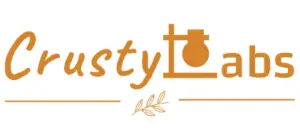Bread-making is an ancient art, and over the centuries, bakers have developed various techniques to ferment dough and enhance the flavor, texture, and shelf life of bread. Two of the most popular methods involve the use of pâte fermentée and sourdough starter. While both are pre-ferments used in bread-making, they have distinct characteristics and applications. In this article, we will delve into the world of pâte fermentée, explore its unique properties, and see how it stacks up against the sourdough starter.
Pâte fermentée is a French pre-ferment, using a piece of dough from one batch of bread for the next, imparting mature flavors. It contains flour, water, salt, and commercial yeast. In contrast, sourdough starter does not contain salt, and relies on wild yeast and bacteria as its leavening agent, producing strong sourish bread flavors.
1. What is Pâte Fermentée?
a. Origins and Usage
Pâte fermentée, a term rooted in the rich culinary traditions of France, is a testament to the art of bread-making that has been passed down through generations. The concept behind pâte fermentée is both simple and ingenious: by saving a portion of dough from one baking session and incorporating it into the next, bakers can infuse their bread with a depth of flavor and texture that is hard to achieve otherwise.
This technique is particularly associated with the iconic French baguette, a bread known for its crisp crust and airy crumb. However, its application is not limited to just baguettes. Many other French breads, such as batards and boules, can also benefit from the inclusion of pâte fermentée.
b. Composition and Preparation
At its core, pâte fermentée is a straightforward mixture. The primary components are:
Flour:
Typically, bakers use the same type of flour as they would for the main bread dough, ensuring consistency in texture and flavor. This is often a high-protein bread flour, which provides strength and structure to the dough.
Water:
Hydration levels are that of the portion of the dough from the last bake, which is typically at 50-60%.

Salt:
Since pâte fermentée is a portion of dough saved from the previous baking session, it contains a small portion of salt. It is the only pre-ferment that contains salt.
Yeast:
Pâte fermentée contains commercial yeast, usually in the form of active dry or fresh yeast, is responsible for the fermentation process. It consumes the sugars in the dough, producing carbon dioxide, which causes the dough to rise.
Once these ingredients are combined, the dough undergoes a brief fermentation period. This initial fermentation allows the yeast to start its activity, producing not only carbon dioxide but also various organic acids and compounds that contribute to the dough’s flavor profile.
2. Comparing Pâte Fermentée to Sourdough Starter
a. Flavor Profile:
Pâte Fermentée:
This pre-ferment is known for its subtle, matured flavors. The use of commercial yeast in pâte fermentée results in a bread that has a mild, yeasty aroma with a hint of nuttiness. The flavors are reminiscent of traditional French breads, which are often characterized by their neutral and versatile taste profile, making them suitable for a wide range of accompaniments.
Sourdough Starter:
The hallmark of sourdough bread is its tangy, slightly acidic taste. This unique flavor profile is a result of the lactic and acetic acids produced by the wild bacteria present in the starter. The intensity of the sourness can vary based on factors like fermentation time, temperature, and the specific strains of bacteria and yeast in the starter.
b. Consistency in Leavening (Commercial Yeast vs Wild Yeast)

Pâte Fermentée:
The predictability of pâte fermentée comes from its reliance on commercial yeast. Commercial yeast strains have been cultivated to provide consistent results, ensuring a steady fermentation rate and a uniform rise in the dough.
Sourdough Starter:
The wild yeast and bacteria captured in a sourdough starter introduce an element of unpredictability. Different environmental factors, including the flour type, ambient temperature, and humidity, can influence the activity of these microorganisms. This can lead to variations in fermentation speed and dough behavior from one batch to another.
c. Bulk fermentation and Proofing Time
Pâte Fermentée:
Given that pâte fermentée uses commercial yeast, the fermentation and rise times are typically shorter. Once the pâte fermentée is mixed into the final dough, the bulk fermentation can range from a few hours to overnight, depending on the recipe.
Sourdough Starter:
Sourdough fermentation is a slower process. The dough can require extended bulk fermentation times, often ranging from 6 to 24 hours. This longer fermentation contributes to the development of the deep flavors characteristic of sourdough bread.
d. Maintenance:
Pâte Fermentée:
Its ephemeral nature means that pâte fermentée does not demand ongoing care. It is prepared fresh for each baking session, used within its optimal window, and then a new batch is made for the next session. There’s no need for continuous feedings or monitoring.
Sourdough Starter:
Maintaining a sourdough starter is akin to nurturing a living entity. Regular feedings, consistent temperature control, and periodic checks are essential to keep it active and healthy. Neglecting a starter can lead to a decrease in its fermentation power or, in extreme cases, contamination by unwanted microbes.
3. Considerations when Substituting Sourdough Starter with Pâte Fermentée
a. Flavor Implications
Sourdough Starter:
Sourdough’s hallmark is its tangy, slightly acidic flavor, a result of the lactic and acetic acids produced by the wild bacteria in the starter. This sourness is a defining characteristic of sourdough bread and is often sought after by enthusiasts.
Pâte Fermentée:
In contrast, pâte fermentée imparts a milder, yeasty flavor to the bread, reminiscent of traditional French loaves. It lacks the tangy punch of sourdough, offering instead a more neutral and subtle taste profile.
When substituting sourdough starter with pâte fermentée, bakers should anticipate a significant shift in the bread’s flavor. While the resulting loaf might not have the distinct sourness of sourdough, it will possess its own set of rich, matured flavors that can be equally delightful.
b. Fermentation times
Sourdough Starter:
The wild yeast and bacteria in a sourdough starter can make the fermentation process somewhat unpredictable. Factors like ambient temperature, humidity, and the specific microbial composition of the starter can influence fermentation speed and dough behavior.
Pâte Fermentée:
Using commercial yeast, pâte fermentée offers a more predictable and consistent fermentation experience. The rise is generally steadier, and the dough’s behavior is more uniform across batches.
When making the switch from sourdough starter to pâte fermentée, it’s crucial to adjust fermentation and proofing times. Bread made with pâte fermentée usually requires half the fermentation and proofing times as compared to sourdough bread due to the commercial yeast used. Monitoring the dough’s progress and being flexible with timings is essential.
c. Dough Hydration and Consistency:

Sourdough Starter:
Sourdough starters can come in various hydration levels, from thick pastes to more liquid mixtures. The hydration level of the starter can influence the overall moisture content of the bread dough.
Pâte Fermentée:
Typically, pâte fermentée has a stiffer consistency, with hydration levels around 50-60%. This can affect the final texture of the bread, leading to a denser crumb if not adjusted for.
When substituting sourdough starter with pâte fermentée, it’s essential to recalibrate the dough’s hydration. Depending on the consistency of the original sourdough starter and the desired texture of the bread, bakers might need to add more or less water to achieve the right balance.
Conclusion
Both pâte fermentée and sourdough starter are invaluable tools in a baker’s arsenal, each bringing its unique set of flavors and characteristics to the table. While pâte fermentée is a quick and efficient way to enhance the taste and texture of bread, sourdough offers a depth of flavor and complexity that is hard to match. Choosing between the two often comes down to personal preference, the type of bread being made, and the desired flavor profile. Regardless of the choice, both methods celebrate the timeless tradition of bread-making and the magic of fermentation.

